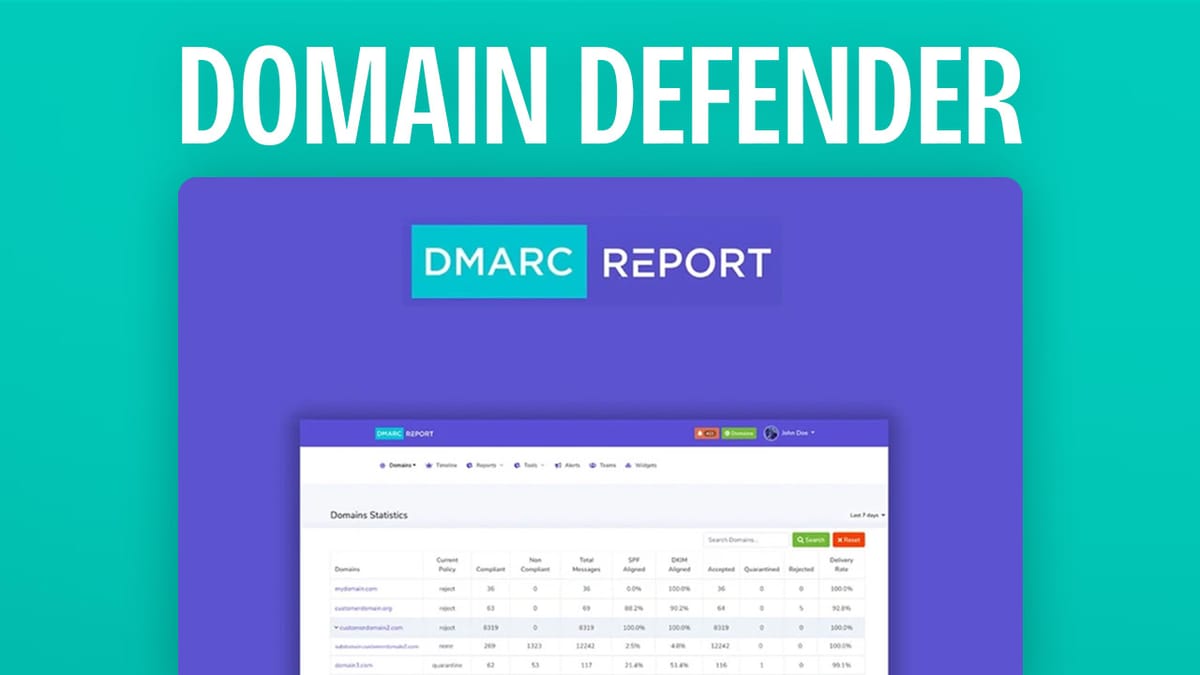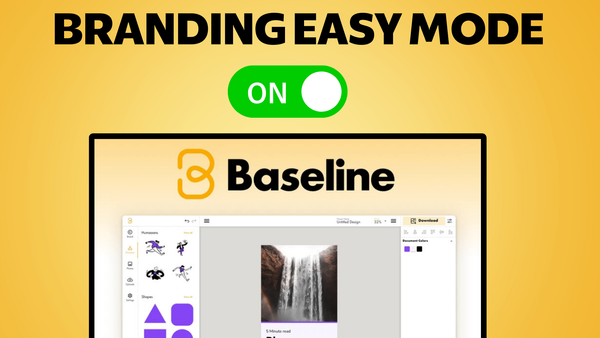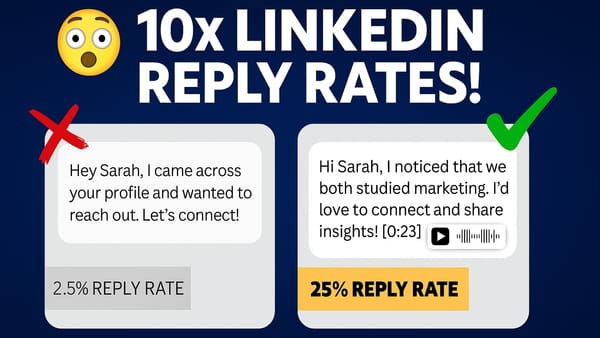Email Authentication Made Easy - DMARC Report Tutorial
Simplify email authentication with DMARC Report. Manage SPF, DKIM, and DMARC policies, monitor compliance, and protect your domain reputation.

Email security is crucial for any business, but it’s often overlooked until it’s too late. In this review, I’ll show you how DMARC Report makes email authentication accessible and manageable, even if you’re not a technical expert.
User Interface [01:07]
DMARC Report provides a clean, straightforward interface for managing your email security. While it deals with technical components, the layout is designed to make complex security concepts more approachable. The dashboard gives you a clear overview of your email authentication status and any potential security issues.
Get DMARCYour Domains [01:30]
Setting up your domain in DMARC Report is the first crucial step. The process involves:
- Creating a DMARC record for your domain
- Adding a TXT record to your DNS settings
- Connecting your domain to DMARC Report for monitoring
The setup wizard walks you through each step, making it manageable even if you’re not familiar with DNS management.
What is DMARC? [04:20]
DMARC acts like a supervisor for your email system. When someone receives an email from your domain, their email provider checks your DMARC policy to verify if the message is legitimate. Think of it as setting rules for how strict you want to be with your email security – from very permissive to highly restrictive.
SPF [06:15]
SPF (Sender Policy Framework) is your authorized list of email senders. It’s like specifying which delivery services can send packages on your behalf. DMARC Report helps you:
- View your existing SPF records
- Monitor SPF alignment
- Ensure you don’t exceed the 10-record limit
- Generate new SPF records when needed
DKIM [09:41]
DKIM (DomainKeys Identified Mail) adds a digital signature to your emails, verifying they haven’t been tampered with during transmission. DMARC Report helps manage:
- DKIM alignment settings
- Authentication monitoring
- Digital signature verification
Policy [11:20]
Your DMARC policy determines how receiving servers handle suspicious emails. Three main options:
- None: No action taken (not recommended)
- Quarantine: Suspicious emails are flagged
- Reject: Unauthorized emails are blocked
I recommend starting with quarantine and adjusting based on your monitoring results.
Reporting Emails [12:47]
DMARC Report’s monitoring system sends you regular updates about your email authentication status. This feature ensures you’re aware of any security issues without having to constantly check the dashboard.
Overview Tiles [13:22]
The dashboard provides quick insights into your email authentication status:
- Compliant emails
- Non-compliant messages
- Forwarded emails
- Detailed message tracking
Percentage [14:38]
The percentage setting allows you to gradually implement your DMARC policy. Starting at 50% lets you test your configuration without risking email delivery problems.
Changing Settings [15:03]
DMARC Report offers two ways to manage your settings:
- Manual DNS updates
- CNAME integration for GUI-based management
The CNAME option is particularly useful for non-technical users who prefer a visual interface.
Teams & Tags [16:60]
Perfect for agencies and businesses managing multiple domains:
- Create teams for different client groups
- Tag domains for better organization
- Set specific permissions for team members
- Manage multiple domains efficiently
Widgets [18:08]
Embed DMARC status widgets on your websites:
- Customizable metrics display
- Domain-specific restrictions
- Client reporting integration
- Real-time status updates
Alerts [18:53]
Stay informed about your email security with customizable alerts:
- Weekly report summaries
- Event-based notifications
- Metric threshold alerts
- Multi-domain monitoring
The Cloudflare Question [20:34]
While Cloudflare offers free DMARC management, DMARC Report provides advantages:
- Works with any DNS provider
- Advanced notification system
- Multi-domain management
- White-label options
- Comprehensive reporting
Plans & Pricing [22:39]
AppSumo Deal Tiers:
- Single code ($69): 25 domains, 75,000 monthly reports
- Multiple codes: Scalable domain limits
- White-label options included
- Flexible scaling options
Conclusion [23:60]
DMARC Report earns an 8.1/10 for its combination of powerful features and user-friendly interface. It’s particularly valuable for:
- Service providers managing multiple clients
- Business owners wanting peace of mind
- Anyone needing to comply with email authentication requirements
- Agencies offering security services
The tool strikes an excellent balance between comprehensive security management and accessibility, making it worth the investment for businesses of all sizes.




